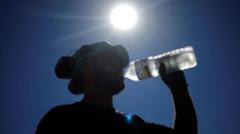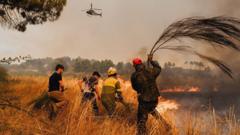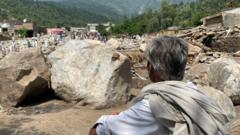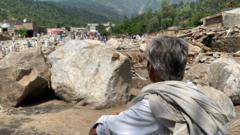A prolonged megadrought has gripped the American Southwest for nearly 25 years, severely impacting water supplies, agriculture, and increasing wildfire risks. A recent study published in *Nature Geoscience* presents troubling evidence that this drought may endure for decades, raising concerns for the region's future as global warming continues to hinder moisture availability.
The study spearheaded by doctoral student Victoria Todd from the University of Texas at Austin suggests that current climate patterns, particularly those linked with Pacific Ocean temperatures, could trap the region in a cycle of dryness. These findings indicate that the megadrought might persist until 2050, or potentially 2100, unless significant climate action is taken to reduce greenhouse gas emissions. Todd emphasized that the ongoing drought is not a temporary setback but rather a long-lasting condition exacerbated by human impact on the planet.
Examining the sediment layers in lakes from the Rocky Mountains, Todd and her colleagues traced historical climate patterns back 14,000 years. Their research suggested that a similar dry climate endured for centuries, coinciding with significant changes in Earth’s orbital dynamics that increased solar radiation during specific periods. These warm eras contributed to shifts in global climates, observed as a consistent block of warm water forming in the Pacific Ocean. This phenomenon altered atmospheric conditions, diverting essential moisture away from the Southwest.
In today's context, the isolated warm water "blob" in the Pacific appears to be caused by climate changes linked to human activity, particularly the burning of fossil fuels. A. Park Williams, a climate scientist at UCLA, remarked on the study's thoroughness but cautioned that projections based on computer models likely underestimate the ongoing and future severity of drought conditions.
As global temperatures climb, the high temperatures result in drier soil and less snowpack due to altered precipitation patterns. This reflects a worrying trend where natural climates and established patterns begin to falter under the strain of human-induced climate change. El Niño—typically associated with wetter conditions in the Southwest—failed to bring the expected moisture during its last occurrence, further complicating the forecast for the region.
The implications of these findings are significant for a rapidly-growing region that relies heavily on both water-intensive industries and agriculture. As the climate continues to change, understanding these ancient patterns may provide insight into potential future conditions, stressing the urgency for effective climate mitigation strategies.




















